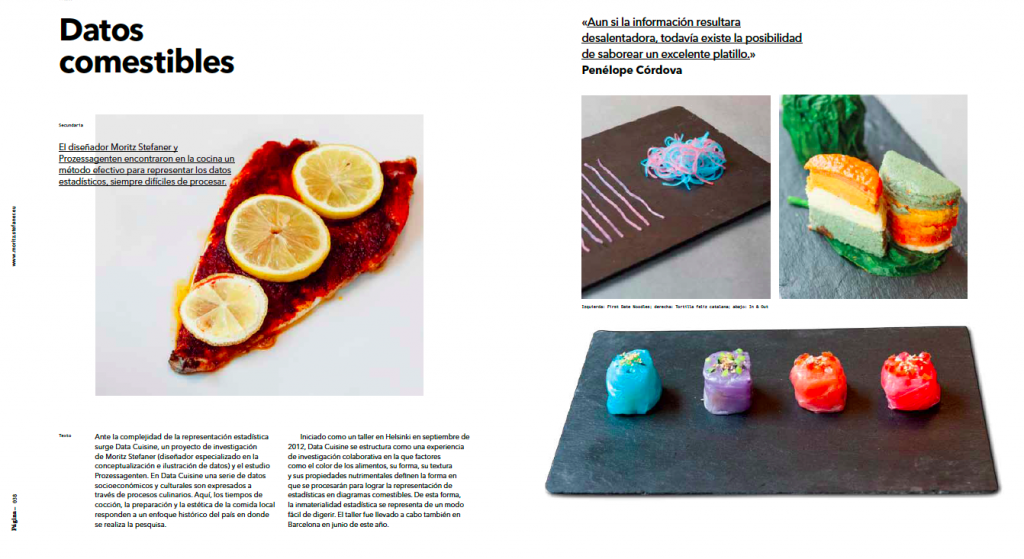The press response was unbelievably positive after the last Data Cuisine workshop at Sonar/Big Bang Data Exhibition in Barcelona. We got covered by a lot of international design blogs like Trendhunter, Citylab, Core77, Fastcodesign, We Make Money Not Art, CNet, Desingbook etc and print magazines (Folio/Mexico, Page /Germany), and we even made it into the major Costa Rican newspaper La Nacion and Forbes Online. So what’s coming next for Data Cuisine?
We aim for a few more editions of the workshop, in order to continue to explore the medium for data representation in conjunction with local cuisines. We are also considering varying the format in the future. Next to the current model — a workshop — we are sure that a high-end data dinner would work well.
We found that the consumption of the food at the end of the workshops could have more emphasis or almost be developed as a separate event. A data dinner would not focus on the collaborative workshop process, but on the dining experience, in which the represented data would provide the topic for analysis and debate.
A data dinner could have any topic that is represented statistically, i.e. society, economics, science, culture and politics. Imagine a group of politicians, managers or scientists that is served several courses of a data dinner representing main issues in their respective field in such a sensual and surprising way. We believe that experience would stir a very inspirational debate opening up new perspectives and lines of thought.
When served the data dishes are not legible without explanation. Some look like ordinary dishes that reveal their meaning only by eating them. Others are very graphic and visual, but in general one has to be told what data they represent. In this way the dishes generate curiosity, which is already the ideal starting point for a discussion about the story and data ‘behind the dish’.
In its article on Data Cuisine, PAGE magazine recommended to anyone interested in it to request a workshop for his or her city. We add: any company, government or organisation that could imagine having a data dinner, please get in touch, too.
For the whole link list of press articles go to the project site.

 Blog
Blog